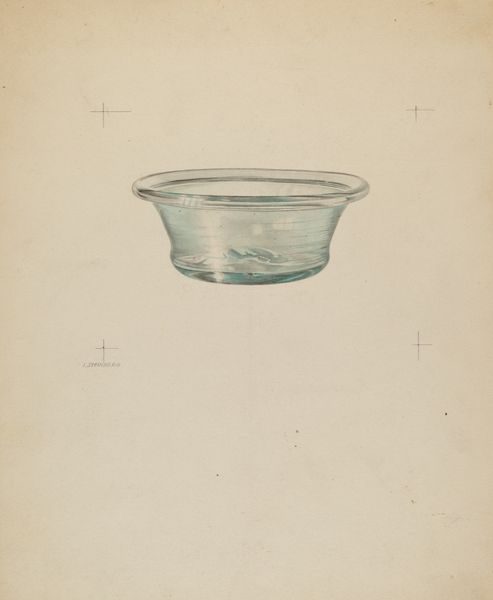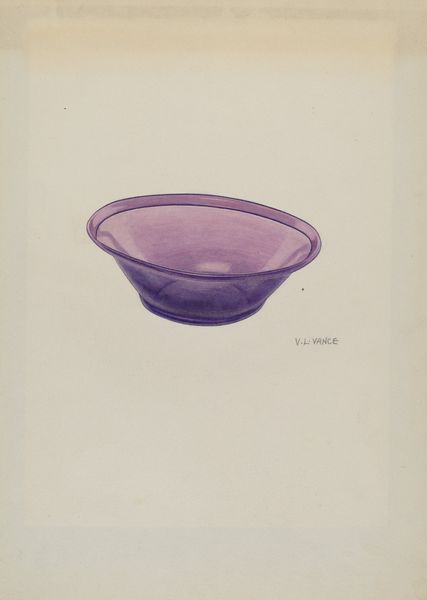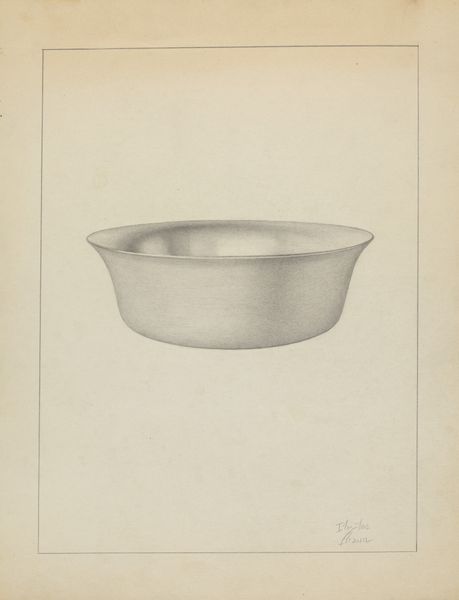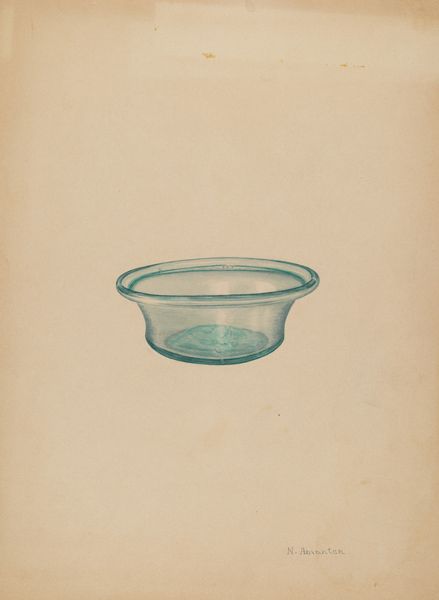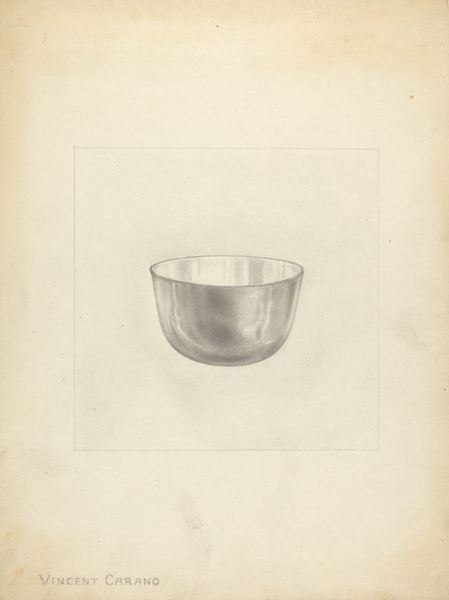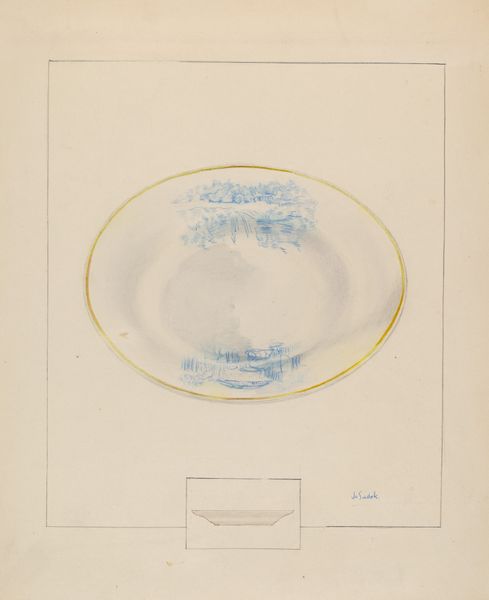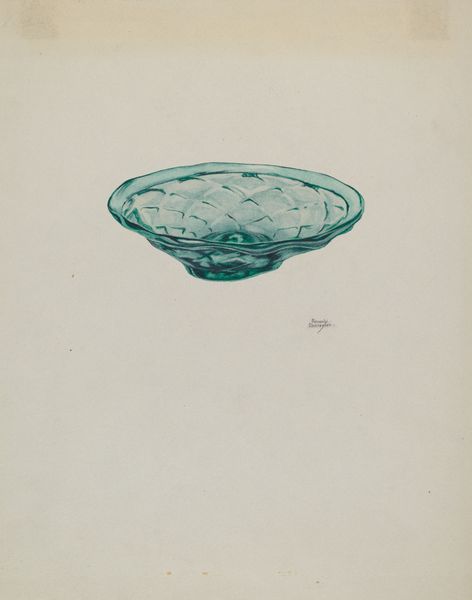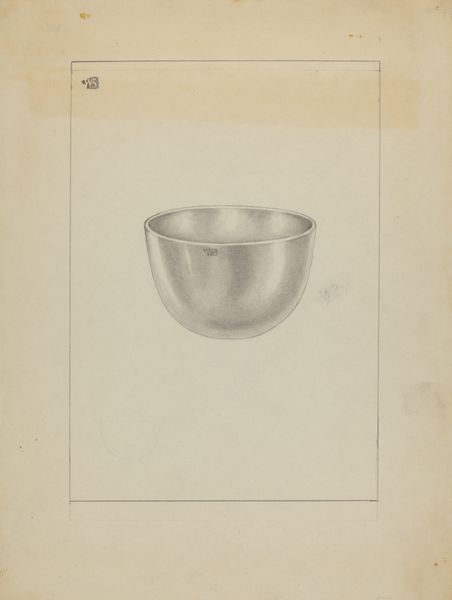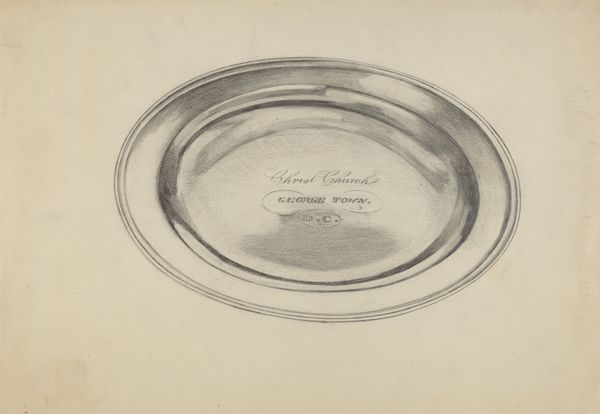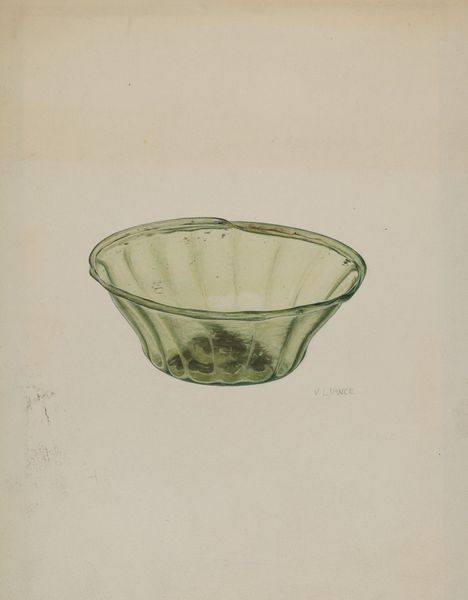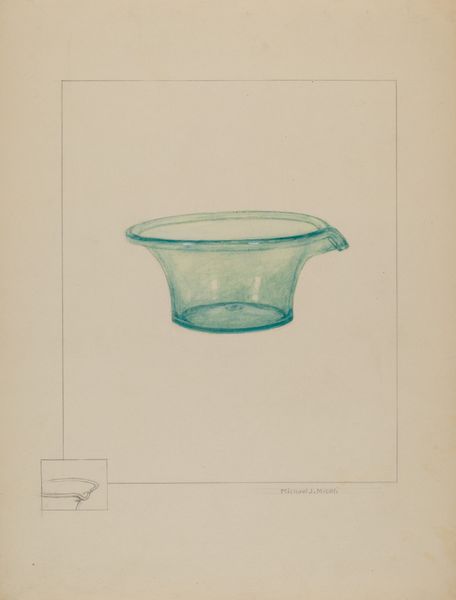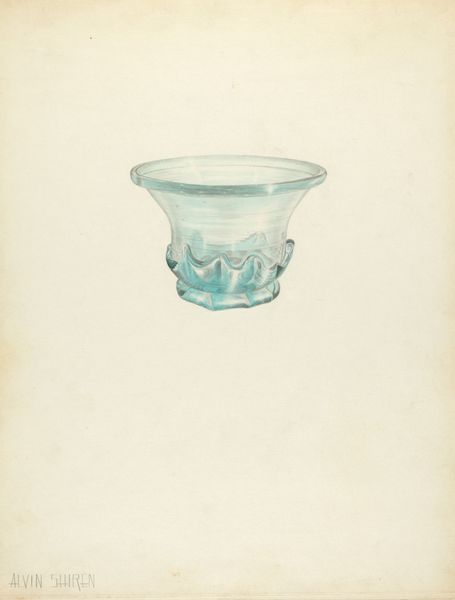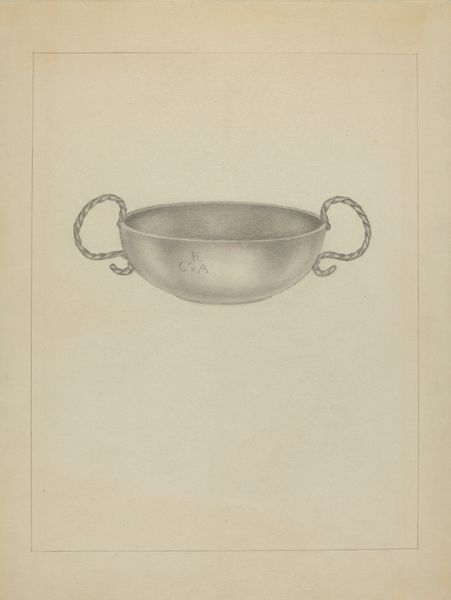
drawing, pencil
#
pencil drawn
#
drawing
#
pencil sketch
#
pencil drawing
#
pencil
#
sketchbook drawing
#
realism
Dimensions: overall: 33 x 24.2 cm (13 x 9 1/2 in.)
Copyright: National Gallery of Art: CC0 1.0
Editor: Here we have V.L. Vance’s "Glass Sauce Dish" from around 1940, rendered in pencil. It has an almost clinical feel to it. What catches your eye about this unassuming piece? Curator: The mundanity is precisely what fascinates me. During the 1940s, the representation of everyday objects often carried significant weight. World War II was raging. Scarcity and rationing were facts of life, and here we have a simple sauce dish. It invites us to consider the intersection of domesticity and the public sphere, doesn't it? What might a humble sauce dish represent within that context? Editor: I see what you mean! Like, holding onto normalcy through the depiction of these very standard items? Do you see a political angle here as well? Curator: Absolutely. Consider the artist's perspective. Is Vance consciously engaging with wartime austerity? Or perhaps reflecting the changing roles of women during that period? With so many men abroad, women entered the workforce and became the backbone of both wartime and domestic production. Editor: That makes me think about labor, and the people actually *using* the sauce dish, you know? Is Vance pointing to them in some way? Curator: Precisely! These intimate objects gain social resonance when viewed through the lens of the war. The fragility of glass, the necessity of sustenance - all subtly underscore larger narratives of survival and resilience during intense sociopolitical upheaval. This could be seen as a commentary on quiet heroism. What do you think about the emphasis on "realism"? Is it effective for highlighting these qualities? Editor: That gives me a completely different perspective on something I initially thought was quite boring! I like the way you connect the personal and the political. Curator: It’s in these connections where art becomes profoundly relevant. Reflecting on how everyday items echo broader historical and social issues is the key.
Comments
No comments
Be the first to comment and join the conversation on the ultimate creative platform.
